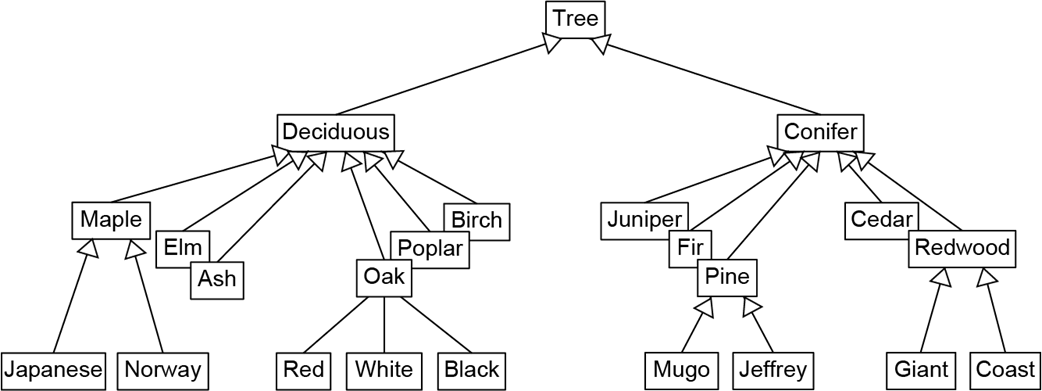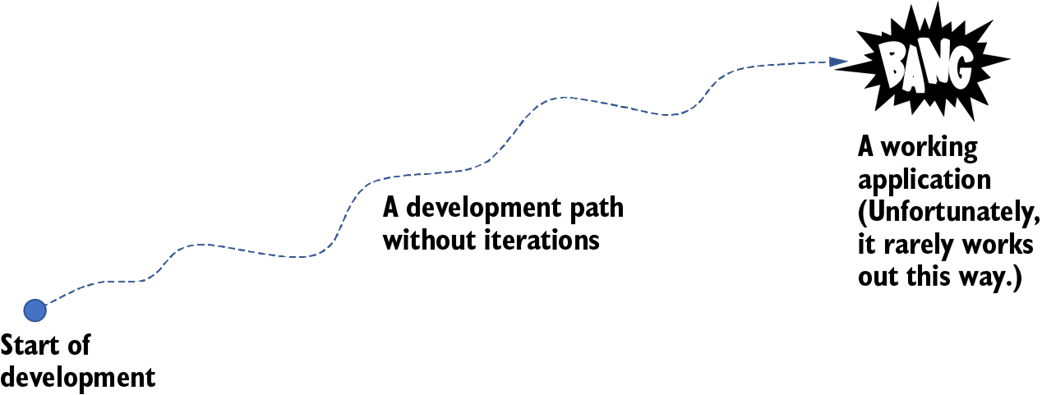1 The path to well-designed software
Well-designed software reliably meets its requirements and is easier to test, change, and maintain. This chapter frames design as a disciplined path from clear requirements to a sustainable application, emphasizing that good design often accelerates delivery as well as quality. Using Python as the teaching medium, the book focuses on object-oriented design principles and industry-proven design patterns, explained through concise before/after examples so the ideas transfer to any modern OO language.
You’ll learn to gather, validate, and analyze requirements to build the right application, then apply solid techniques to build it right via iterative design–code–test cycles with room to backtrack from poor choices. The narrative surfaces common pain points—changes that leak across classes, classes that try to do too much, hardcoded decisions that limit flexibility, and “surprise” behavior—and shows how principles reduce coupling, enforce single responsibility, defer decisions to runtime, and make behavior predictable. It also previews recurring architecture situations such as publisher–subscriber, where reusable patterns provide solution models.
Because change and complexity are inevitable, good design balances flexibility with simplicity and evolves incrementally rather than through a risky Big Bang. The chapter reviews OOP foundations—encapsulation (including encapsulating what varies), abstraction to curb unnecessary detail, inheritance, and polymorphism—as the substrate for principles and patterns used throughout. It closes by urging thoughtful use of AI-generated code: verify correctness, assess architecture and sustainability, and leverage your mastery of principles and patterns to guide tools toward well-designed solutions.



A hierarchy of classes and subclasses. Does it have to be so complex? Good design techniques can simplify this data.



Publisher–subscriber is a common software architecture situation. One application component produces data that other application components consume. The Observer Design Pattern provides a model to solve this problem.

The Big Bang theory of application development. If we write lots of code in a prolonged marathon instead of developing the software iteratively, we can only hope that the Big Bang at the end will magically produce a working application. Unfortunately, that magic rarely happens.


Summary
- Design is a disciplined engineering approach to creating a solution to a problem. In software engineering, the problem is to create working software, and the solution is a well-designed, sustainable application.
- Well-designed software is better in many ways, such as being more reliable, flexible, and maintainable. Good design helps ensure that applications are completed on time and do what their clients expect.
- It is possible to become a better programmer by using good software design techniques that include good design principles and design patterns.
- Good design principles help make our code more flexible and able to handle changes such as new requirements. Design patterns are industry-proven models for creating solutions to common software architecture problems.
- Software design starts by acquiring and analyzing an application’s requirements to ensure that we’re developing the right application. The application must do what it’s supposed to do.
- Developing a well-designed sustainable application nearly always requires multiple iterations with backtracking over bad design decisions. It’s hard work. Don’t rely on a magical Big Bang at the end of a marathon coding session.
- Good software design must deal with the major challenges of change and complexity.
- The design principles and design patterns in this book are based on the object-oriented programming concepts of abstraction, encapsulation, inheritance, and polymorphism.
- Encapsulation also means isolating the parts of a program that can change. Then, when changes do occur, they won’t leak out and cause changes to other parts of the program.
FAQ
What does this chapter mean by “software design”?
Software design is a disciplined engineering approach to turning requirements into a successful, sustainable application. It uses design principles to improve code and design patterns to solve recurring architecture problems so that the result meets requirements and stands the test of change.What makes software “well-designed,” and why does it matter?
Well-designed software meets its requirements, is reliable and unsurprising, performs efficiently, remains flexible and maintainable, supports collaboration, and typically ships sooner with fewer costly reworks. Using sound principles and appropriate patterns produces better code you can be proud of.Who is this book for, and what are the prerequisites?
It’s for beginner to intermediate Python developers (and experienced devs needing a refresher) who know basic data structures and OOP, can write/debug simple programs, and can run them. Examples were tested with Python 3.12 and should work on 3.10+.What will I learn from this book?
You’ll learn to apply design principles to improve code, employ industry-proven design patterns, gather/validate/analyze requirements so you build the right app, and develop iteratively (including backtracking from poor decisions). You’ll learn by before/after examples in Python, with skills transferable to other OO languages.How do design principles differ from design patterns?
Principles are guidelines that improve code at the line, function, class, and collaboration levels (for example, “Encapsulate What Varies”). Patterns are higher-level, reusable models for common architecture problems (like Observer for publisher–subscriber). Both rest on core OOP concepts: encapsulation, abstraction, inheritance, and polymorphism.Why must requirements come first (“build the right app, then build it right”)?
Even a beautifully engineered system fails if it solves the wrong problem. Start by acquiring and analyzing requirements to ensure correctness, derive the initial classes from them, then apply good design techniques to build the solution well.Why emphasize iterative development over a “Big Bang,” and what is an MVP?
Good design rarely emerges in one pass. Multiple design–code–test iterations let you make tradeoffs, backtrack from bad choices, and converge faster. An MVP (minimum viable product) meets the minimal requirements and passes tests early, enabling earlier releases and smoother evolution.What common design pitfalls does the chapter highlight?
- Leaking changes: interface changes in one class force edits in others due to tight coupling.- Too much responsibility: “God classes” are hard to reason about and debug; excessive subclassing adds brittle complexity.
- Hardcoding: freezing decisions (e.g., fixed concrete types) reduces flexibility.
- Surprises: APIs that produce unexpected results (like off-by-one month indices) erode trust.
- Recurring architectures: scenarios like publisher–subscriber benefit from patterns (e.g., Observer).
 Software Design for Python Programmers ebook for free
Software Design for Python Programmers ebook for free